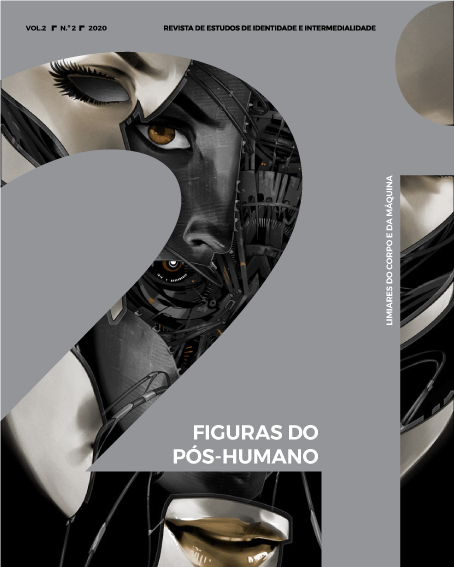Logics of the posthuman imaginary and the cultural production of youth reception
DOI:
https://doi.org/10.21814/2i.2617Keywords:
human, ciberpunk, cyberculture, crossover, PeirceAbstract
It is a fact that the technological revolution from recent times has potentially provoked unprecedented mutations in all domains of human life. These operated transformations deeply affect social, cultural and anthropological conditions; new subjectivities are generated and intelligence technologies become more capable to shelter them, in the context of adaptable communities. These are challenges that have motivated the search of paths towards a comprehension of complexities evoked by this new context. In the narrow dialogue with this reality, representations are projected, foremost in the arts. The literary and cultural productions focused on the youth reception reveal themselves as privileged territory for manifestations of an imaginary that allies itself to representations of a stage that has been called post-human. In narratives which shelter this fictional universe, robots and unnumbered techno-mechanical devices proliferate, along with protagonists that increasingly derive from and populate digital environments. Such manifestations of the imaginary, notably, provoke reflections about the lived reality. In that sense, we will seek to take census, in literary and cultural productions addressed to the youth audience, of some figures of this post-human universe.
Downloads
References
Abreu, C. F. (2007). Limite branco. Rio de Janeiro: Agir.
Agamben, G. (2009). O que é o contemporâneo? e outros ensaios. São Paulo: Argos; Santa Catarina: Chapecó.
Amaral, A. (2004). Espectros da ficção científica. A herança sobrenatural do gótico no cyberpunk. Revista Verso e Reverso, 38. Consultado em http://www.versoereverso.unisinos.br/index.php?e=2&s=9&a=15.
Bosi, A. (1994). O conto brasileiro contemporâneo. São Paulo: Ed. Cultrix.
Beckett, S. (2009). Crossover fiction: Global and historical perspectives. New York/London: Routledge.
Dery, M. (1999). The Pyrotechnic insanitarium: American culture on the brink. NY: Grove Press.
Falconer, R. (2010). Young adult fiction and the crossover phenomenon. In David Rudd (ed.). The Routledge Companion to Children’s Literature. New York: Routledge.
Gibson, W. (1984). Neuromancer. New York: Ace Books.
Lemos, A. (2002). Cibercultura: Tecnologia e vida social na cultura contemporânea. Porto Alegre: Sulina.
Mccarron, K. (1995). Corpses, animals, machines and mannequins: The body and cyberpunk. In Mike Featherstone & R.Burrows (eds.). Cyberspace Cyberbodies Cyberpunk. London: Sage.
Martins, M. L.,Miranda, J.B, Oliveira, M. & Godinho, J. (2011). Imagem e Pensamento. Coimbra: Grácio Editor.
Santaella, L. (2003). Culturas e artes do pós-humano, da cultura das mídias à cibercultura. São Paulo: Paulus.
Santaella, L. (2007). Linguagens líquidas na era da mobilidade. São Paulo: Paulus.
Santaella, L. (2010).A Ecologia Pluralista da Comunicação. Conectividade, mobilidade, ubiquidade. São Paulo: Paulus.
Tabbi, J. (1995). Postmodern sublime. Technology and american writing from Mailer to cyberpunk. London: Cornell University Press.
Warrick, P. (1977). Images of the man-machine inteligence relationnship in science fiction. In T. D. Clareson, (org). Many futures, many worlds: Theme and form in science fiction. Kent (OH): The Kent State University Press.
Referências audiovisuais
Decelle, A., Declercq, C., Defour, V. & Jury, P. (2014). L3.0. França: Isart digital.
Morris, J. & Stanton, A. (2008). WALL-E. Emeryville, CA: Pixar Animation Studios.
Downloads
Published
Versions
- 2020-12-03 (3)
- 2021-05-04 (2)
- 2021-05-04 (1)
How to Cite
Issue
Section
License
Copyright (c) 2020 Maria Auxiliadora Baseio, Maria Zilda da Cunha

This work is licensed under a Creative Commons Attribution-NonCommercial 4.0 International License.


.jpg)










